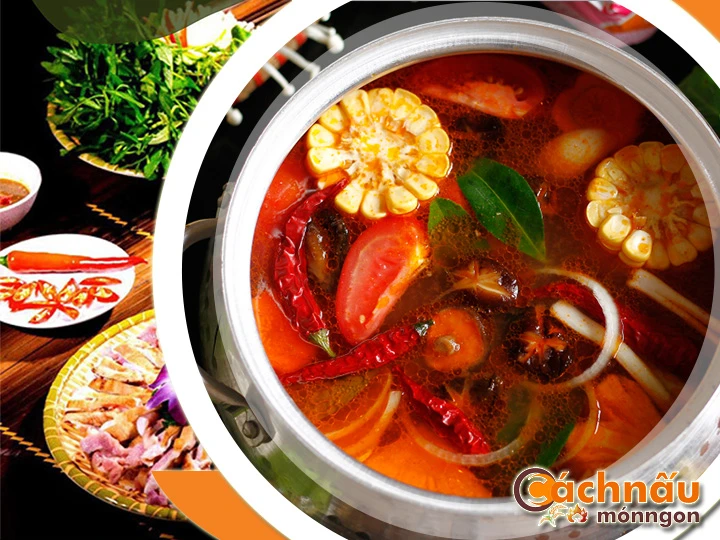Master the Best Rabbit Hot Pot Guide for Food Lovers - Lẩu thỏ
Master the Best Rabbit Hot Pot Guide for Food Lovers - Lẩu thỏ
Blog Article
Hot pot rabbit, a delicious and gastronomic treasure, has been cherished across different food cultures for centuries.

This comprehensive guide explores all you need to know you need to know about rabbit hot pot, from its ancient origins to updated recipes, wellness benefits, and cooking directions for creating the flawless recipe at home. Whether you are a professional cook or a amateur chef, this guide will support and train you to master the art of rabbit hot pot.
UNVEILING THE PAST & CULTURAL ASPECTS CENTERED AROUND {BRAISED RABBIT DISH|HEARTY RABBIT MEAL|RABBIT HOT POT|RABBIT STEW|BUNNY CASSEROLE|RABBIT CUISINE|STEWED RABBIT
Rabbit hot pot represents a exceptional and historical dish with meaningful heritage in various regions. Its renown stems not only from its rich flavor but also from its historical and cultural significance.
Rabbit hot pot serves as a one-of-a-kind and traditional dish with significant cultural roots in diverse locales. Its demand stems not only from its hearty flavor but also from its legacy and traditions.
- Historical Beginnings: Rabbit hot pot was first made in agricultural regions where rabbits were a widely available, valuable food source. In traditional Chinese culture, it was a traditional treat, particularly during cultural gatherings.
- Expansion Across Areas: In European nations like the UK, rabbit was often included in braises, adapting into modern versions of braised dishes as the dish gained global appeal.
2. Hearty Rabbit Meal influencing East Asia's Customs.
- Throughout China: Known as the famous rabbit hot pot, rabbit hot pot is a staple of spicy Sichuan cuisine, renowned for its spicy flavors and cherished at intimate family events.
- Across Korea and Japan: While less prevalent, rabbit hot pot is occasionally prepared as a medicinal dish in South Korea, or taking cues from nabemono hot pot in traditional Japanese cooking, highlighting local plants and flavoring ingredients.
- Throughout Vietnam: Although rabbit hot pot is not a regular meal, it is recognized during unique moments or in countryside where rabbit meat is commonly found. It is often seasoned with distinctive spices such as aromatic lemongrass, aromatic ginger, and spicy chili, paired with fresh vegetables like river spinach, green mustard, or mimosa vegetables. This dish is favored for its unique flavor and lẩu thịt thỏ high nutritional value, frequently served at special moments with close ones.
Ở vùng đất Việt Nam, tuy không hoàn toàn là món ăn thịnh hành thường ngày, nhưng rất quen thuộc trong những dịp đặc biệt hoặc ở các vùng xa xôi, nơi thịt thỏ rất sẵn có. Thường được chế biến với gia vị đặc trưng như sả, thơm gừng, và ớt cay, kết hợp với rau ăn kèm như rau nhút. Món ăn này nổi bật trong các bữa tiệc nhờ mùi vị khác lạ và lợi ích sức khỏe, thường được thưởng thức tại các bữa tiệc sum vầy.
3. Braised Bunny Dish central to Western Cuisine.
- Across France: Traditionally served as a flavorful dish with wine-infused broth, fragrant herbs such as rosemary, and root vegetables. Rabbit hot pot is a culinary staple for festive gatherings.
- In Italy: The dish named “Cacciatore”, featuring rabbit simmered with wine and tomatoes, is a precursor to rabbit hot pot dishes.
HOW TO COOK RABBIT HOT POT: RECIPES AND TECHNIQUES
Rabbit hot pot is a versatile dish that merges fresh ingredients, savory broths, and distinct techniques to create a rich and satisfying meal. Below are key steps into the core recipes and methods to master rabbit hot pot.
The Fundamental Recipe for Rabbit Hot Pot
* Ingredients:
- 1 whole rabbit (chopped into parts)
- 4 cups of broth (chicken)
- Vegetables (mushrooms)
- Spices and herbs (rosemary)
- Seasonings (salt)
- Optional: rice for serving
* Cooking Instructions:
- Prepare the Rabbit: Clean and section the rabbit into pieces. Season with a pinch of salt, pepper, and a drizzle of soy sauce for half an hour to boost the flavor.
- Prepare the Broth: Heat a pan with a bit of oil. Fry garlic and ginger until fragrant. Add your selected stock and bring it to a light boil.
- Cook the Meat: Add the rabbit pieces into the pot and let them cook slowly on a low flame for around half an hour until cooked through.
- Add Vegetables: Add your selected vegetables and cook until they are perfectly cooked but still vibrant.
- Serve: Transfer the hot pot to a large bowl. Serve with accompaniments and side options like rice or noodles.
Mastering Rabbit Hot Pot Techniques
- Marination:
. Marinate the rabbit with a blend of salt, pepper, and aromatics to amplify its base flavor.
. For more complexity, use wine or a mix of fragrant herbs.
- Building Layers of Flavor:
. Start by cooking the rabbit in the broth to extract its essence.
. Introduce vegetables step by step based on their cooking times.
- Cooking Time:
. Avoid overcooking the rabbit, as it can turn chewy.
. Test for doneness by checking if the meat is fork-tender.
- Flavor Enhancements:
. Adjust the broth by adding more spices as needed.
. Experiment with different flavor profiles, such as creamy European-inspired variations.
Tips for Success
- Choose Freshness: Always choose fresh rabbit meat and seasonal vegetables for the top flavor.
- Balance Flavors: Be mindful of the sweetness in the broth. Taste and adjust frequently during cooking.
- Dipping Sauces: Offer a range of sauces like spicy garlic dip or soy-based dips to elevate the dining experience.
- Visual Appeal: Use a tabletop cooker or serve the hot pot as a focal point to promote sharing.
By mastering these cooking techniques, you can prepare a rabbit hot pot that’s both flavorful and visually appealing, making it a star attraction for any celebration or occasion.
Report this page
